NYC’s Forgotten ‘War on Christmas Trees’
Discover how an obscure holiday crackdown affects festive street vendors today!


While New York City is home to a vast amount of well-known tourist locations, it’s also chock full of lesser-known gems that are equally fascinating and worth visiting. Plenty congregated on the Lower East Side, which has a rich history as an immigrant, working-class neighborhood.
In the late 19th century, the first groups to arrive were Germans and Eastern Europeans, followed by Italians and other Southern Europeans. Today, the Chinese, spilling over from nearby Chinatown, are the dominant immigrant group in the area.
In the early 2000s, the Lower East Side underwent a period of rapid gentrification, making it one of the trendiest neighborhoods in Manhattan. It’s where you can find alleys and tenement buildings adjacent to chic boutiques, up-and-coming restaurants and trendy music/arts venues. Altogether, these elements make up the eclectic, quirky and uniquely diverse fabric of the Lower East Side.
From a former bathhouse to a secret garden, here are the top 10 secrets of the neighborhood:
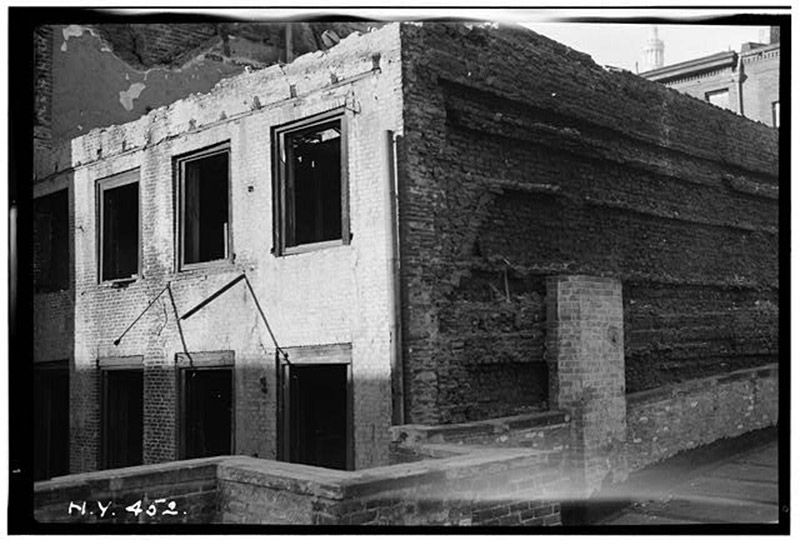
In 1936, the oldest known house in Manhattan, on the southern end of Cherry Street, was demolished as part of a citywide slum clearance campaign. The Dutch-style town house was constructed around 1760, and reportedly housed some of George Washington’s officers during the Revolution.
From October 1936 to January 1937, Arnold Moses of the Historic American Building Survey took a series of exterior and interior photos of this building at 29-29½ Cherry Street. Today, this section of Cherry Street is occupied by Knickerbocker Village and the Governor Albert E. Smith Houses, two large public housing projects constructed in the 1930s and 1950s, respectively. Read more here.
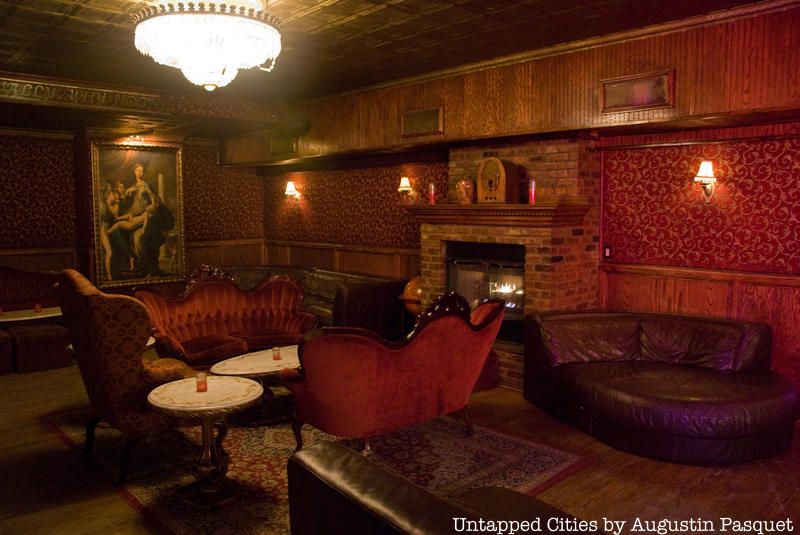
The Back Room, located on 102 Norfolk Street, is one of New York City’s most famous speakeasy cocktail bars. It’s well known today, but it also served as an actual speakeasy bar in the early 1900’s. In fact, it’s one of only two left in New York City that operated during Prohibition.
The back of The Back Room is the secret space where New Yorkers could order alcohol out of teacups. The room is dressed as if it were still the 1920s, featuring Prohibition memorabilia and furniture that looks like it was plucked right out of The Great Gatsby.
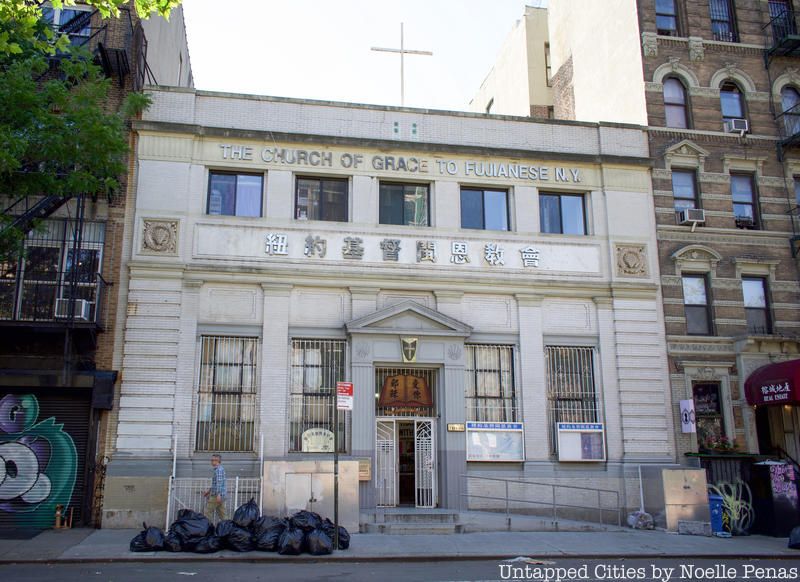
During the mid-to-late 19th century, public health and sanitation in New York City had become a growing concern. By this time, the city’s burgeoning population had reached 1.4 million, leaving many residents without access to adequate sanitation facilities like toilets and bathrooms. To help combat the problem, public bathhouses were constructed around New York City.
The Allen Street Bath was the last remaining public bathhouse until it closed during New York City’s financial crisis in the 1970’s. Today, it houses the Church of Grace to Fujianese, a Chinese congregation in the Lower East Side. However, the elaborate facade of the building, which includes water-theme ornamentation, still remains intact. See more vintage photos of New York City’s public baths here.
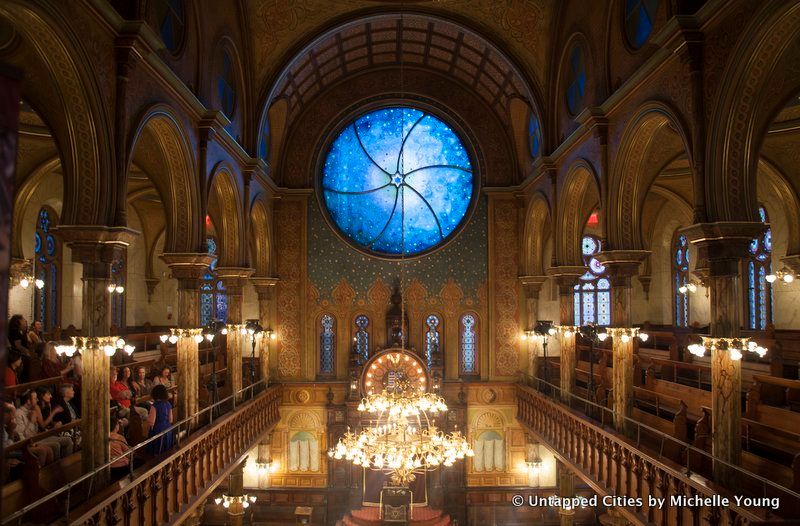
Located in Chinatown, the Eldridge Street Synagogue was built in the 19th century amidst the surge of Eastern European Jewish immigrants. The main sanctuary of the synagogue was abandoned and only rediscovered in the 70’s, when the warped doors were opened again to a flurry of cobwebs, transporting NYU Professor Gerarde Wolfe to a hauntingly preserved time capsule of what the synagogue once was.
It has since been restored and now serves as an education center, which provides pay-what-you-wish tours. Although the original building took ten months to build, the restoration took twenty years and $18.5 million to complete.
As one of the first erected in the United States by Eastern European Jews, the Eldridge Street Synagogue has a vibrant 120+ year history with a multitude of little-known secrets. Many intricate details of the building, for example, are actually faux. (The walls and columns of the Eldridge Street Synagogue may appear to be made of fine marble, but they’re actually painted.) If you have a chance to sit in the pews of the synagogue, make sure to also check out the pine floorboards beneath you. By sliding your feet along the surface, you’ll feel a slight dip in the wood, which stands as a mark left behind by generations of visitors.
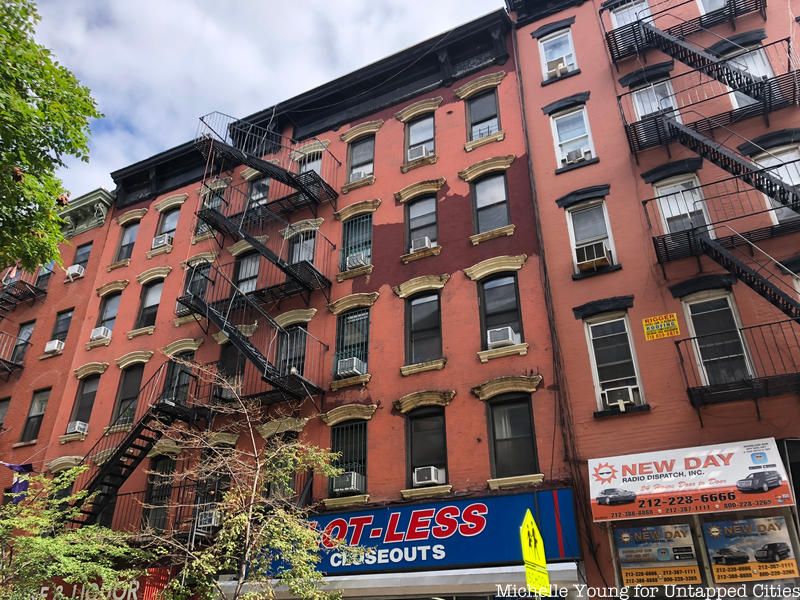
Producer J. Ralph’s iron and velvet recording studio is located on 80 Clinton Street, in a building that was previously called Clinton Star Theater. It was built in 1914 by Sam Agid and served as a vaudeville performance theater before shuttering in 1950. Attracting the greats like Charlie Chaplin, the venue was one of the oldest Vaudeville theaters in New York City history.
Today, J. Ralph’s studio, which doubles as a super-exclusive night club, is one of the last grand recording spaces left in the United States. It’s accessible by appointment only, and guests must enter through apartment building entrance at 80 Clinton and then walk through a pass door. Decorated to honor its vaudeville roots, it features a cast-iron fish tank, candles, and fancy couches that look just as uncomfortable as the ones you might find preserved with a plastic cover at your grandparents’ house.
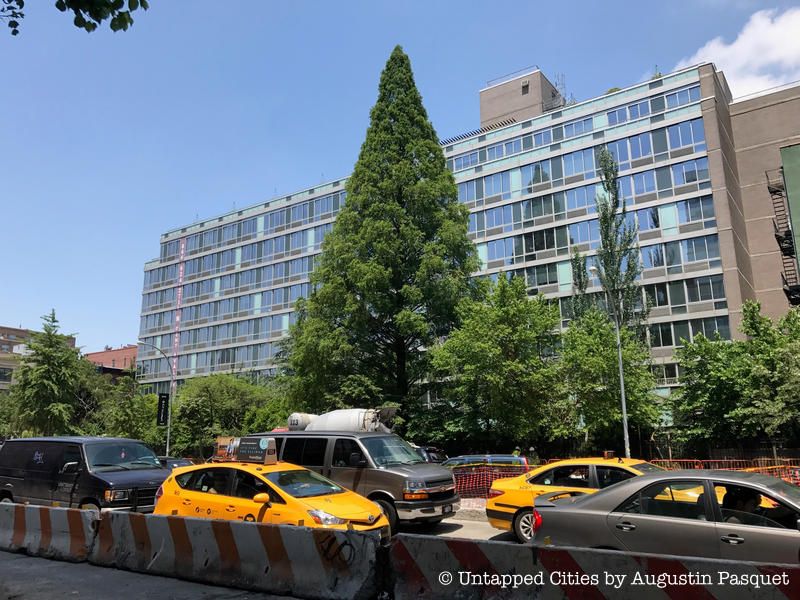
Founded in 1973, the Liz Christy Garden is the first community garden in New York City. During the year of its inception, a local resident named Liz Christy — with the help of other gardening enthusiasts called the “Green Gorillas” — spent their free time beautifying local areas with window boxes and seed bombs. In 1974, after enlisting volunteers to clean out an abandoned lot, they received the city’s permission to use the site as their garden for $1 a month.
Today, the Liz Christy Garden’s gravel path winds from Bowery to Second Avenue, and features hidden alcoves and a lake that only reaches 2.5 feet deep. Most notably, it’s home a dawn redwood tree that towers above Houston Street, near the intersection of Bowery. This particular tree is thought to be the tallest redwood tree in Manhattan, standing over 100 feet. Read more about it here.
If you’re interested in putting your green thumb to use, visitors are also welcome to volunteer at the garden. Twenty hours of service will be rewarded with a key to the garden.
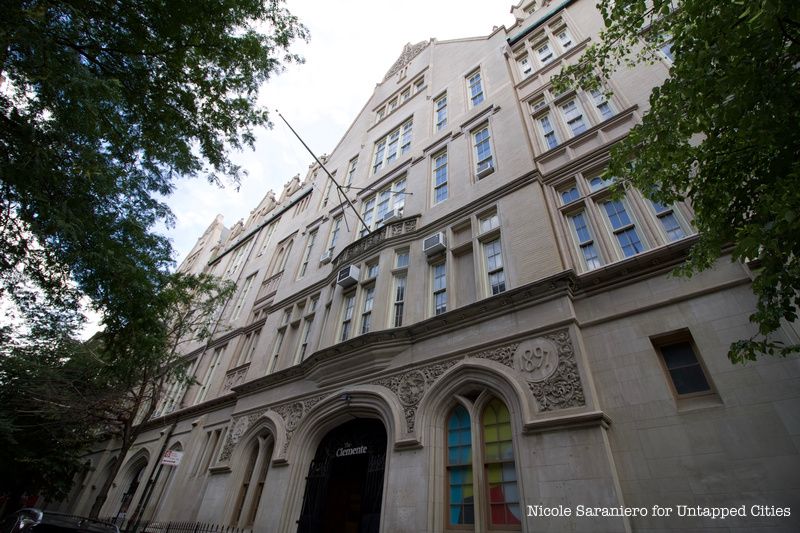
The city-owned building that now houses the Clemente Soto Velez Cultural Center has a long history in the Lower East Side. In a former life, it served as a public school (P.S. 160), which was left abandoned in the 1970s due to a fire. It became an illegal gathering place for drug addicts and squatters before it was ultimately cleaned out and transformed into a community center for Spanish-speaking immigrants. Today, the Clemente administration occupies the building, offering long term studio space for artists and on-going arts programming.
Clemente notably used to host classes and events for students of the Wiccan Family Temple Academy of Pagan Studies, New York City’s first magick school. According to local legend, the center is also one of the most haunted places in the city. The five-story structure is said to be infested with spirits, including a little girl “clad in early-20th century clothing.”
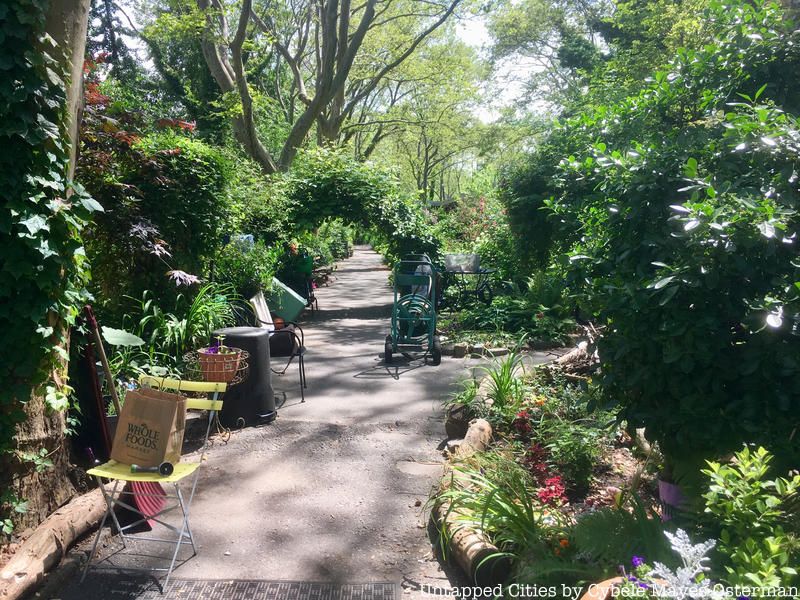
In 1929, New York City purchased land on the Lower East Side to widen Chrystie and Forsythe Streets and to construct low-cost housing. However, that plan was never realized and in 1934, the Sara Delano Roosevelt Park was constructed on the site (named after Franklin Delano Roosevelt’s mother).
It contains the M’Finda Kalunga Garden, named in memory of an African American burial ground that was located adjacent to the park on Chrystie Street, between Rivington and Stanton Streets. The land served as the city’s second African American burial ground between 1794 and 1853, before the remains were disinterred and sent to Cypress Hills Cemetery in Brooklyn.
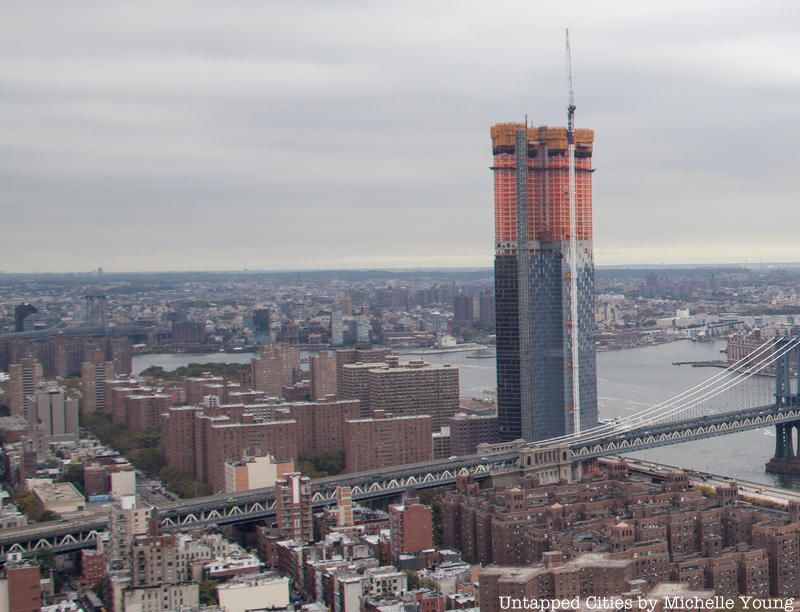
The Lower East Side has long been associated with tenement buildings and the poorest New Yorkers lived in infamously decrepit conditions in the 19th century. To address this problem, the city decided to rezone the area along the city’s waterfront to make room for public housing. According to Gothamist, the apartment complexes were intended to stretch over several blocks with playgrounds and public schools.
Although there was a public housing project already erected on East 3rd Street, it was not financed by the city — thus, the first city-funded development was actually the Lower East Side’s Vladeck Houses, built and maintained by the New York City Housing Authority. It’s named after Baruch Charney Vladeck, who was general manager of Yiddish newspaper, The Jewish Daily Forward, as well as a founding member of the Jewish Labor Committee (JLC) in 1934.
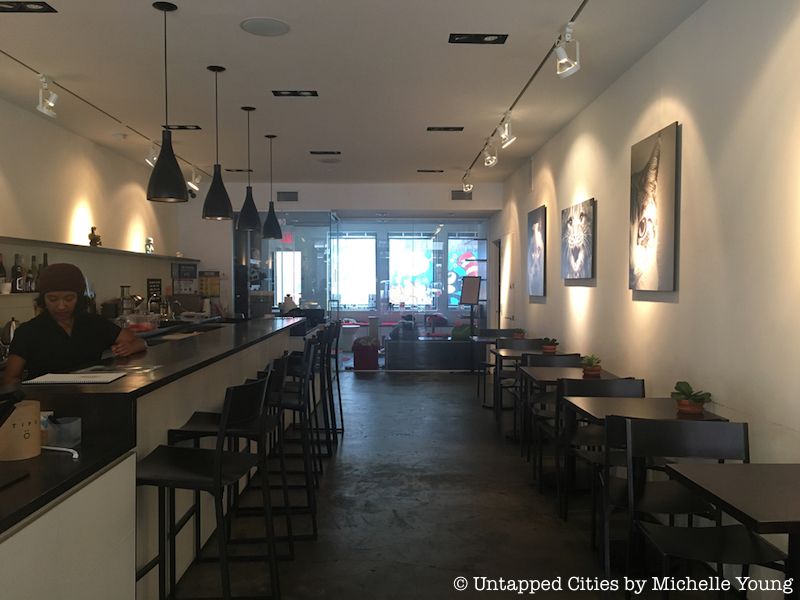
Although this last one isn’t so much a secret, it’s well-worth highlighting. If you’re a cat or animal lover, head to Koneko (located on 26 Clinton Street), New York City’s first Japanese cat cafe. Unlike Meow Parlour, this cafe is modeled directly after Japan’s immensely popular pet cafes, where you can actually sit and have glasses of sake with a cat in your lap.
Founded by Benjamin Kalb, a chef and classical pianist, the Koneko pet cafe was inspired by Kalb’s trip to the Calico pet cafe in Japan. Designed by Co-Office, the modern decoration of the cafe includes cat-related cartoon graffiti and cushy seating for both humans and cats.
The cafe has three different sections including the loft area called the Upper Cattery, the small lounge area known as the Lower Cattery, and the outdoor patio area which is aptly referred to as the Catio. Koneko serves artisanal Japanese fare, wine juices, and sake. It costs fifteen dollars to spend an hour in the cafe with its 20 cats, and a portion of the money goes to the Anjellicle Cats Rescue, an organization whose mission is to save at-risk cats from New York City shelters.
Next, check out 10 Fun Facts About NYC’s Essex Street Market, A Lower East Side Survivor
Subscribe to our newsletter